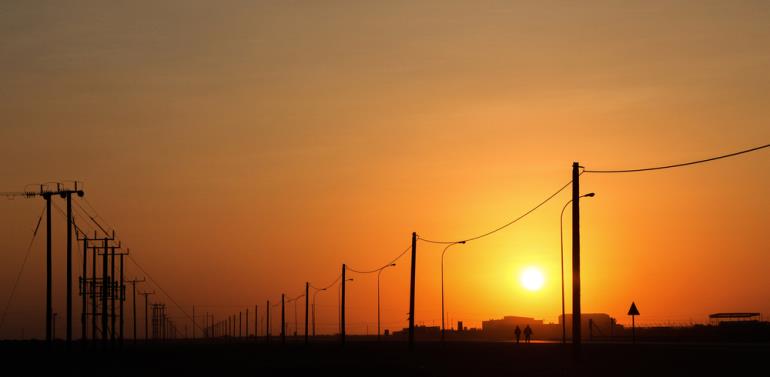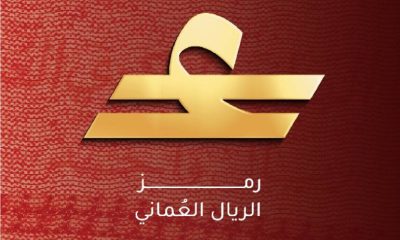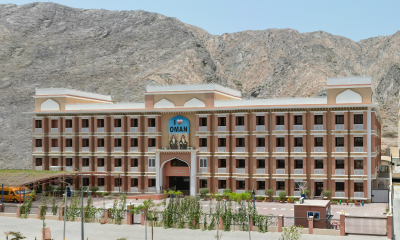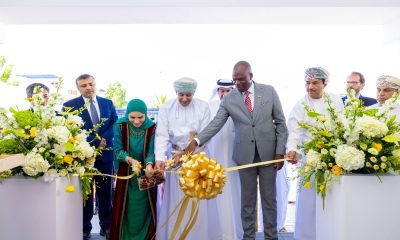Uncategorized
Decline in oil prices will have significant impact on Oman’s economic and fiscal indicators: S&P

We expect the contribution of domestic demand to real GDP growth to remain weak in 2016-2019 but for our assumed modest increase in oil prices to result in a more positive contribution from net exports. We estimate trend growth in real GDP per capita at negative 1 per cent, which is well below most economies at similar levels of development. We expect slow progress on the government’s Omanization program–a training program for Omani citizens aimed at easing dependency on foreign labour–due to a skills mismatch between many Omani workers in the private sector, and the more attractive pay and conditions that Omanis enjoy working in the public sector.
We estimate Oman’s budget deficit at 13 per cent of GDP in 2016, in line with the government’s own budget forecast. This compares with a deficit of close to 18 per cent of GDP in 2015. Oman increased its oil output to a record high of 358 million barrels of oil in 2015, a 4 per cent increase on the previous year, with exports rising by 5.5 per cent to 308 million barrels. However, this increase failed to effectively mitigate the negative ramifications from lower oil prices, with government oil revenues falling by about 40 per cent. Our general government balance forecasts include an estimate of the government investment returns.
In 2016, the government has indicated it plans to reduce spending, including subsidy expenditures, raise corporate taxes from 12 per cent to 16 per cent, and increase fees for government services. Spending is budgeted to fall 11 per cent compared with the 2015 outturn, with the largest cuts expected to come from “other” expenditures such as that on vehicle, travel, and hospitality expenses, followed by cuts to spending on civil ministries and investment.
Total revenues are budgeted to fall 4 per cent, as we expect the oil price to decline in 2016 compared with 2015. We understand that the 2016 budget is based on an oil price assumption of about $45/bbl compared with $75/bbl in 2015. Oman’s 2016-2020 five-year plan aims to increase the role of the private sector, and the government has suggested that it could privatize some entities in 2016. A value-added tax to be imposed across the Gulf Cooperation Council (GCC) could be in place by 2018, which would further support Omani government revenues. Our 2016-2019 general government deficit estimates are in line with those of the five-year plan.
We think that the government has relatively limited room for spending cuts, given that nearly 50 per cent of spending relates to public sector wages and subsidies and exemptions, which are typically difficult to reduce, although we note that some progress has been made with regard to subsidy reduction. The Omani government has committed to increasing non-hydrocarbon-related tax revenues over the medium term. As a result, we expect the general government deficit will average 11 per cent of GDP in 2016-2019. We assume that deficit financing will result in an annual average increase in Oman’s government debt of about 5 per cent of GDP a year over 2016-2019. We also estimate that the government’s net asset position will fall from 61 per cent of GDP in 2015 to 13 per cent in 2019.
Sizable oil receipts in past years have helped maintain Oman’s strong external position. However, lower oil prices lead us to forecast a current account deficit in 2016 of about 20 per cent of GDP, compared with 14 per cent of GDP in 2015. We expect the current account deficit will remain in double digits until 2019. Notwithstanding the related external borrowing and decline in foreign currency reserves, Oman’s external position–as measured by liquid external assets minus external debt–will remain a rating strength.
However, we expect it will deteriorate, to a debtor position of 25 per cent of current account receipts (CARs) in 2019 from a creditor position of about 60 per cent in 2015. Meanwhile, we expect the country’s gross external financing requirements will rise to 130 per cent of CARs and usable reserves in 2019 from 116 per cent in 2015.
In our view, monetary policy flexibility is limited because the Omani Rial is pegged to the U.S. dollar. That said, the peg has provided a stable nominal anchor for the economy, particularly as contracts for oil, the main export, are typically priced in dollars. Oman’s real effective exchange rate has appreciated by 12 per cent since early 2014. In our view, this represents a deterioration in international competitiveness of the country’s modest tradables sector, which is likely to dampen non-oil GDP growth, absent any offsetting factors, such as improved efficiency or technological capacity.
-

 Banking & Finance2 weeks ago
Banking & Finance2 weeks agoOman Oil Marketing Company Concludes Its Annual Health, Safety, Environment, and Quality Week, Reaffirming People and Safety as a Top Priority
-

 Economy2 months ago
Economy2 months agoMaal Card: What Oman’s New National Payment Card Means for Everyday Users
-

 News2 months ago
News2 months agoSheikh Suhail Bahwan, Chairman of Suhail Bahwan Group, Passes Away
-

 News1 month ago
News1 month agoOIG Appoints New CEO to Lead Its Next Chapter of Excellence
-

 Economy2 months ago
Economy2 months agoOman Unveils Official Omani Rial Symbol in Landmark Move to Boost Global Currency Presence
-

 News1 month ago
News1 month agoReport: How India & The Middle East Are Exploiting Immense Economic Synergies
-

 Uncategorized1 month ago
Uncategorized1 month agoOman’s ISWK Cambridge Learners Achieve ‘Top in the World’ and National Honours in June 2025 Cambridge Series
-

 Trade1 month ago
Trade1 month agoConsulate Office of the Republic of South Africa opens in Muscat, enhancing bilateral relations




























You must be logged in to post a comment Login